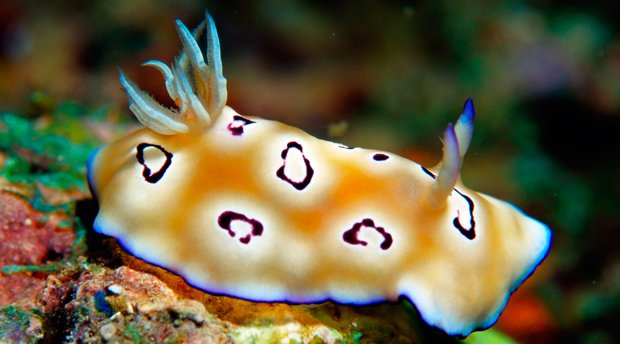Sex secrets of sea slugs revealed

THE SEX LIFE OF toxic sea slugs, which have recently killed several dogs on New Zealand’s beaches, is about to go under the microscope in a A$195,000, three-year study.
Researchers from Massey University in New Zealand’s North Island will investigate if the slugs’ sex life holds the key to why the creatures are washing up in increasing numbers on Auckland beaches around the Hauraki Gulf.
“We want to find out who the slugs are having sex with. Is it with their neighbours, or out-of-towners?” says evolutionary geneticist Professor Paul Rainey, from New Zealand Institute for Advanced Study at Massey’s Auckland campus.
Sex with the neighbours
Paul says there is a concern that the toxin the slugs produce, tetrodotoxin, could be dangerous to humans as well as potentially harmful to seafood sources and aquaculture industries. The chemical is a neurotoxin that hinders the actions of nerves and is the same kind of toxin produced by pufferfish.
Last year the Auckland Regional Council (ARC) put up signs warning people to closely supervise children and pets after a number of dogs ate the slugs and died. Before the dogs died sea slugs were not known to be toxic.
Paul will work with the ARC and the Cawthron Institute in Nelson to establish genetic similarities and compare concentrations of the lethal toxin in different sea slug populations in the Hauraki Gulf and elsewhere in New Zealand coastal waters. “We want to find out if sea slug populations are increasing and what is causing them to increase,” he says. DNA samples will be taken to provide clues to the bio-geography of sea slug populations and show any variations in the levels of toxin they produced.
Lethal toxins
Recent research suggested the apparent rise in sea slug numbers may be linked to the proliferation of Asian date mussels in Auckland coastal waters. Divers collecting sea slug samples had noted, anecdotally, that slugs fed on the mussels, an invasive marine species introduced to New Zealand in the 1970s which have spread throughout the Waitemata Harbour.
Earlier this month beachgoers were warned to supervise their children and pets after toxic sea slugs were reported across Auckland’s eastern bays beaches from Okahu Bay to Kohimarama. Sea slugs were also found earlier this winter near Long Bay, Browns Bay, Narrow Neck Beach, Cheltenham, Bayswater on the North Shore and Illiomama Rock near Rangitoto Island. Last month, they were also found at Kohimarama Beach, about 8 km east of downtown Auckland.
LINKS
Images and information about the NZ sea slug

